Maintaining constant water temperature crucial to reduce mortalities

In a study by the authors, Pacific white shrimp (Litopenaeus vannamei) collected from farms located in the Chantanburi Province of Thailand were infected with white spot syndrome virus (WSSV) by immersion and oral means to evaluate their related responses to water temperature.
The virus was kept at minus-80 degrees-C for reinfection of specific pathogen-free (SPF) L. vannamei. Quantified as pathogenic by real-time polymerase chain reaction (PCR), the inoculum was prepared from WSSV-infected tissues from the cephalothorax including gills and muscle. Prior to the experiments, SPF shrimp were randomly sampled and verified free of WSSV.
WSSV challenges
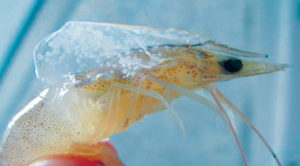
In the immersion challenge, 180, 5-g shrimp were transferred into 21, 90-L aquariums equipped with aeration and heaters. Then 90 mL of the WSSV inocula were added to the aquarium water.
One group of shrimp was constantly maintained at 32 ± 1 degrees-C, and a control group was held at 28 ±1 degrees-C after challenge. Other groups were kept at 32 ± 1 degrees-C, with the water temperature reduced to 28 ± 1 degrees-C at one, three, five and seven days post-challenge. Each group had three replicates.
For the oral route for challenge, another 180 shrimp were transferred into 21, 90-L aquariums with aeration and heating. Shrimp were initially fed once at 10 percent body weight with WSSV-infected shrimp and later fed twice daily with commercial pelleted feed at a rate of 5 percent body weight/day.
One group of shrimp was maintained at 32 ± 1 degrees-C, and a control group was held at 28 ± 1 degrees-C after challenge. Other groups were kept at 32 ± 1 degrees-C, after which temperature was reduced to 28 ± 1 degrees-C at one, three, five and seven days post-challenge. Each group had three replicates. Gross signs of disease and mortality were recorded every 12 hours until the end of the experiment. The status of moribund and surviving shrimp were confirmed by nested polymerase chain reaction testing and histopathology.
Results of experiment
Shrimp constantly maintained at 32 ± 1 degrees-C and those held at that temperature for seven days after challenge before switching to 28 ± 1 degrees-C did not show clinical signs or mortality when challenged by either immersion or the oral route. Surviving shrimp were WSSV-negative by nested PCR as well as histopathology.
Initial mortalities were observed in the other groups of shrimp treated with immersion or oral challenge between 42 and 66 hours after challenge (Tables 1 and 2). Total mortality was observed between 114 and 168 hours.
Limsuwan, Responses of healthy juvenile shrimp, Table 1
| Temperature (° C) | Disease Signs Appear (hours) | Initial Mortality (hours) | Total Mortality (hours) | PCR Result |
|---|---|---|---|---|
| 24 ± 1 | 24 | 42 | 114 | + |
| 28 ± 1 | 24 | 42 | 114 | + |
| 32 ± 1 | No sign | No mortality | No mortality | – |
Limsuwan, Responses of healthy juvenile shrimp, Table 2
| Temperature (° C) | Disease Signs Appear (hours) | Initial Mortality (hours) | Total Mortality (hours) | PCR Result |
|---|---|---|---|---|
| 24 ± 1 | 36 | 54 | 144 | + |
| 28 ± 1 | 36 | 66 | 168 | + |
| 32 ± 1 | No sign | No mortality | No mortality | – |
Thermal treatment increased survival
Solving problems related to water temperature in grow-out ponds to control WSSV is almost impossible, even with the use of greenhouses. On the other hand, during larval rearing in hatcheries, temperatures of 32 ± 1 degrees-C can easily be maintained using heaters. So far, not many hatcheries elevate water temperatures to these levels. Instead, they normally maintain 28 to 30 degrees-C or even lower in those hatcheries that do not have heaters during winter periods.
In spite of having PCR detection of WSSV for postlarvae before stocking, many farms in Latin American and Thailand found the larvae samples were not always fully representative of the stocked population, and WSSV outbreaks would occur when temperatures dropped below 30 degrees-C. Even when biosecurity measures were employed in conjunction with zero water exchange during the first 60 days after stocking, WSSV mortalities always occurred. Some of the farms surveyed decided to apply the thermal treatment of 32 ± 1 degrees-C for seven days, which resulted in significantly increased survival rates (Table 3).
Limsuwan, Final survival rates for farm ponds, Table 3
| Farm Location | Survival in Ponds Without Thermal Treatment (%) | Survival in Ponds With Thermal Treatment (%) |
|---|---|---|
| Ecuador | 40-50 | 50-75 |
| Peru | 35-45 | 60-80 |
| Thailand | 30-50 | 50-70 |
(Editor’s Note: This article was originally published in the May/June 2014 print edition of the Global Aquaculture Advocate.)
Authors
-
Dr. Chalor Limsuwan
Department of Fishery Biology
Kasetsart University
50 Phaholyothin Road
Jatujak, Bangkok 10900 Thailand[104,116,46,99,97,46,117,107,64,99,116,110,115,105,102,102]
-
Dr. Sutee Wongmaneeprateep
Department of Fishery Biology
Kasetsart University
50 Phaholyothin Road
Jatujak, Bangkok 10900 Thailand -
Dr. Niti Churchird
Kasetsart University
50 Phaholyothin Road
Jatujak, Bangkok 10900 Thailand -
Dr. Carlos A. Ching
Nicovita – Alicorp SAA
Lima, Peru
Tagged With
Related Posts
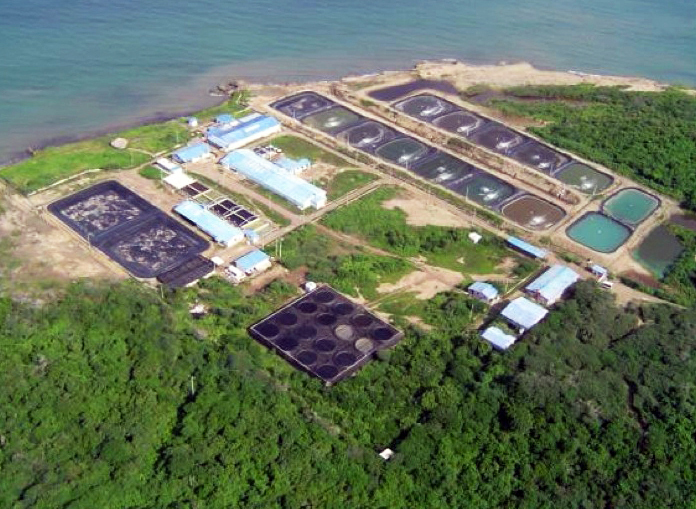
Health & Welfare
CENIACUA develops WSSV-resistant shrimp in Colombia
To combat white spot syndrome virus (WSSV) in white shrimp, Corporación Centro de Investigación de la Acuacultura de Colombia (CENIACUA) initiated a selective-breeding program to develop resistance in shrimp.
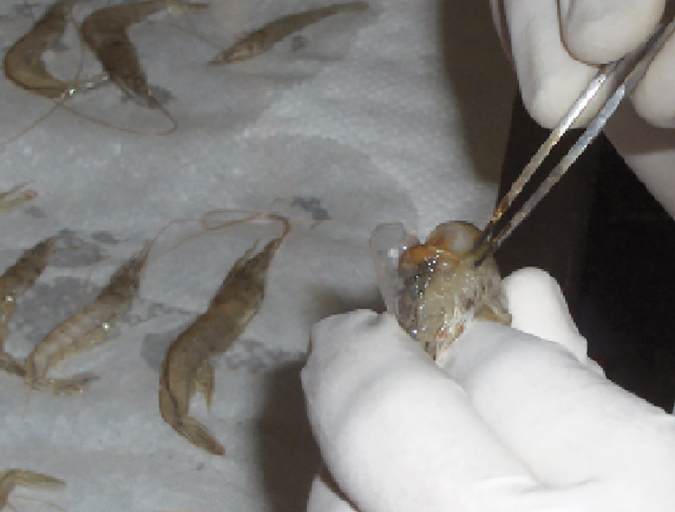
Health & Welfare
Double-stranded RNA against WSSV genes provides antiviral protection in shrimp
Silencing genes in white spot syndrome virus (WSSV) with critical roles in replication could provide a strong antiviral effect and thus reduce shrimp mortality. The authors therefore established a study to evaluate the antiviral efficacy of double-stranded (ds)RNA against non-structural WSSV genes.
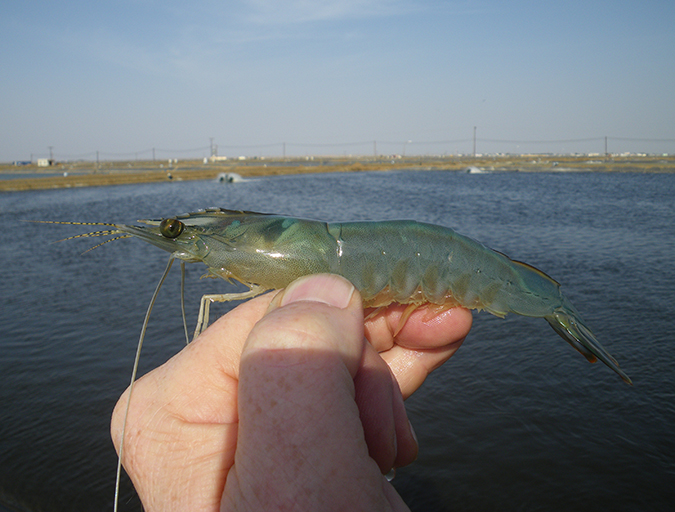
Health & Welfare
Saudi Arabia developing effective farmed shrimp biosecurity strategy
Biosecurity strategies adopted by the shrimp industry in the Kingdom of Saudi Arabia have resulted in historical production in 2015 and a similar forecast for 2016, and are a significant step towards the long-term goal of sustainable aquaculture.
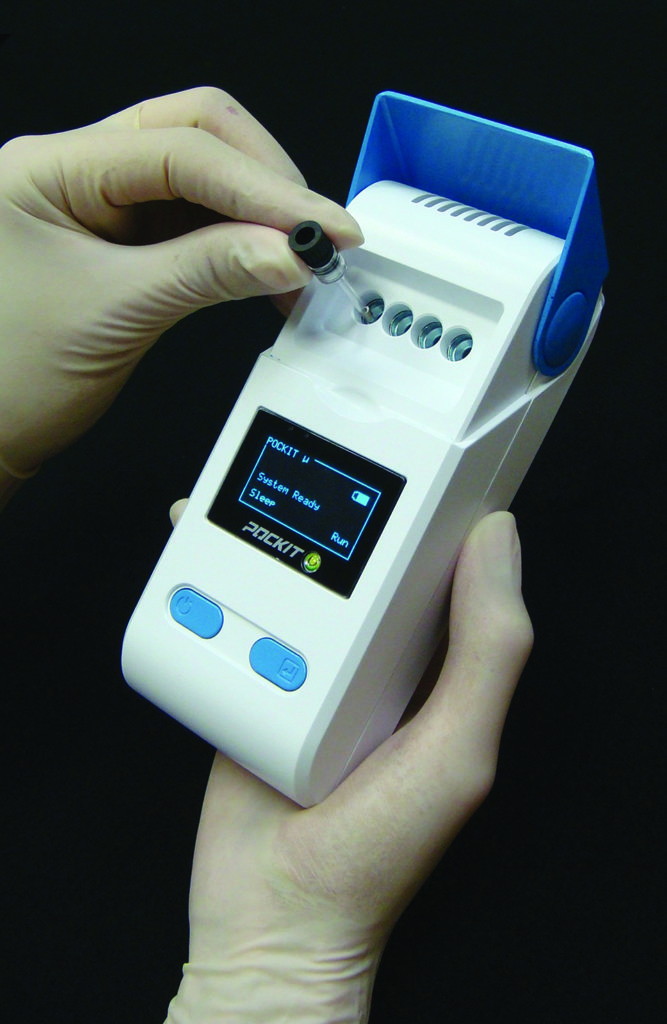
Health & Welfare
Rapid on-site diagnostic tool for AHPND management
To help minimize economic losses caused by acute hepatopancreatic necrosis disease, timely detection of its pathogenic Vibrio etiological agent plays a critical part in disease management. A portable device with accompanying polymerase chain reaction assays can quickly identify the AHPND markers in shrimp, water, live feed or other sources.


